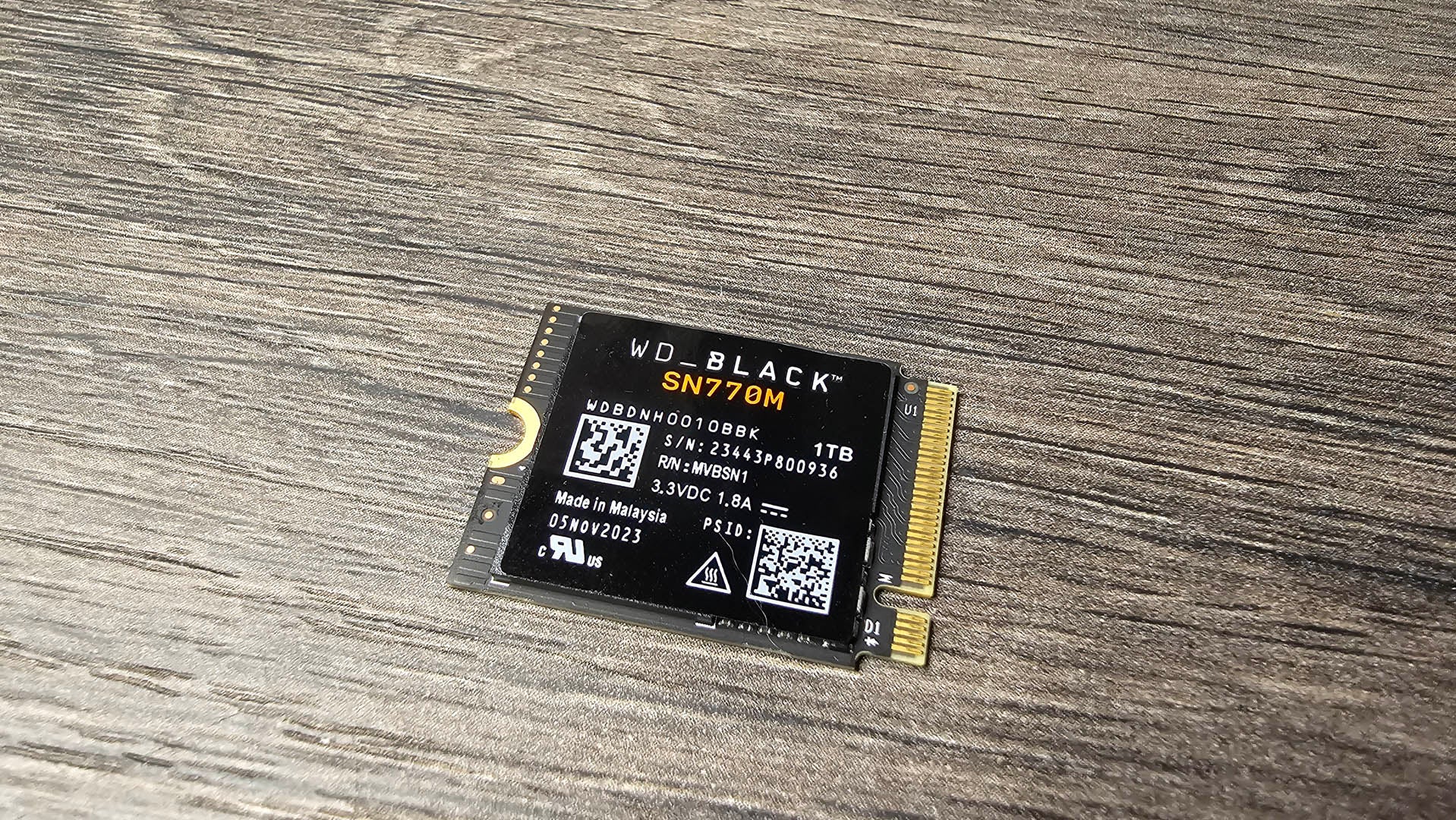Apple MacBook Air M3 Review
Still the best MacBook for most people




Verdict
This is the best MacBook for the vast majority of people. It’s powerful, sleek and has battery life that’ll power through even the busiest of days. 8GB of memory and a 256GB SSD feels stingy at the base level, but there’s still plenty of value to be had with Apple’s latest do-it-all laptop.
Pros
- Fantastic performance for the size and weight
- Standout keyboard and trackpad
- Great battery life
- Good value
Cons
- 8GB base memory option
- Expensive upgrade prices
- An OLED screen would have been the icing on the cake
Key Features
- Two sizesThere’s a choice between a 13-inch or a 15-inch display
- Apple’s latest chipThe updated Air comes with the M3 chip for excellent performance
Introduction
I’ve been eagerly awaiting the MacBook Air M3 ever since the latest Apple Silicon chip arrived towards the end of 2023 – it’s now here, and it doesn’t disappoint.
The MacBook Air is one of the most iconic laptops of the past decade. The wedge-shaped design has bid farewell, but the latest incarnation of the coffee shop staple mixes excellent performance, long battery life and a svelte body.
While there’s a lot of competition for the best laptop crown, the MacBook Air M3 has plenty in its favour. For most people, this is the best MacBook on the market, and here’s why.
Design and Keyboard
- Three colour options, including improved coating on the Midnight hue
- Excellent keyboard with Touch ID sensor
- Roomy and responsive trackpad
After a hefty redesign with the M2 MacBook Airs and the introduction a few months later of a 15-inch version, the M3 upgrade was going to stick to the same blueprint – that’s how Apple works.
This is no bad thing, as the MacBook Air M3 remains one of the most tastefully designed laptops on the market. The iconic wedge shape that made the Air series so recognisable for over a decade has been replaced with a boxier overall look that’s the same thickness all over.
It remains a light machine, especially compared to the beefier MacBook Pro models. The 13-inch Air weighs 1.24kg, with the 15-inch model coming in slightly heavier at 1.51kg. That’s still lighter than the 1.55kg M3 MacBook Pro.

Importantly, the Air doesn’t feel too light – it still has a reassuring feel and it’s weighted very well, ensuring you can lift the lid with a single finger while the bottom stays firmly on a surface.
Four colours are available: Silver and Space Grey speak for themselves, while Starlight has a subtle gold tinge that avoids the gaudy, blingy finish of many of Apple’s gold iPhones.
The final colour is Midnight, a deep, dark blue that can look black in certain light. This Midnight colourway got a lot of criticism when it was launched due to its propensity to showcase fingerprints, Apple said it has now added a new coating that should prevent this from being an issue. It would have been nicer to have a few more fun colours like the pastel shades the iMac comes in. Maybe this will come with the next redesign.
The keyboard and trackpad are both excellent. The keys are large, with a nice click and an even backlight. The trackpad is huge and wonderfully responsive for gestures and scrolling.

Apple has built the MacBook Air M3 with 50% recycled materials – a first, Apple claims, for the company. While the aluminium enclosure is also made from recycled materials and the packaging is 99% fiber-based, rather than plastic.
Display and Sound
- Sharp retina display
- No ProMotion
- An OLED would have been nice
The MacBook Air M3 is available in two sizes, and for the first time, both sizes are available right away. The 13-inch model is slightly cheaper, and more portable, while the 15-inch option offers more screen real estate. According to Apple, battery life is the same across both and they have the same internal options, so it just comes down to size preference.
The actual display, whether the 13.6-inch or 15.3-inch version, is unchanged from the previous MacBook Air models powered by the M2 chipset. The screen remains an IPS LED panel, with a max brightness of, in my tests, 450 nits. Both sizes have a PPI of 224, making them sharp – if not quite to the levels of the MacBook Pro with a Mini LED panel.
By all accounts, the screen on the MacBook Air is great and paired with the loud, clear speakers it can make for a good content-watching experience. It’s colourful, bright enough for all situations and is clearly a high-quality LCD. Yet, that’s not to say it couldn’t be improved. The lack of an OLED (or Mini LED) option means there’s no proper HDR playback here, whether that’s for streaming content or editing an HDR workflow in Final Cut or Premiere Pro,
There’s no fast refresh rate option either, with the panel on the MacBook Air stuck at 60Hz. ProMotion has been a staple on the MacBook Pro for several years now and I would have hoped we’d at least have a 90Hz panel on the entry-level Apple laptops by now.
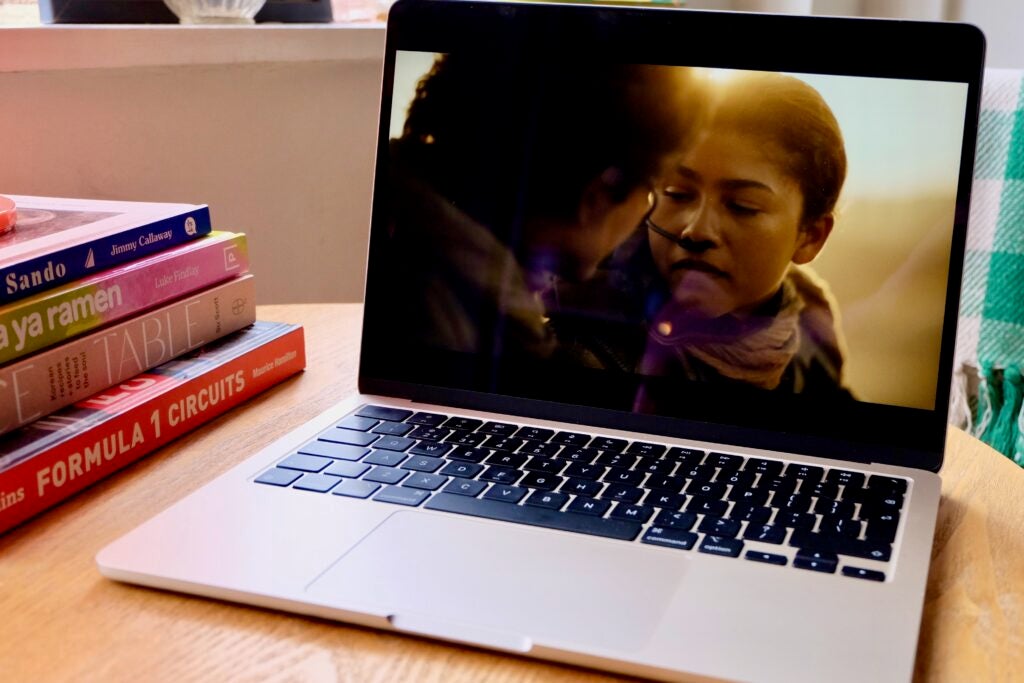
Sitting at the top of the display is the notch that hides the 1080p webcam. It’s a shame that the only biometric unlocking comes from the Touch ID sensor, rather than a similar Face ID system to the iPhone. There’s actually no form of facial unlocking at all here, something you’ll find on most similarly-priced Windows machines.
The 1080p webcam is much better than any on an Intel MacBook Air and a huge improvement over the one on the M1 MacBook Air. Still, considering the amount of space it takes up I don’t think the quality matches up, especially when the lighting isn’t great.
Performance
- Good power for the size and lack of fan
- 8GB starting memory feels low
- Can output to dual monitors
Apple introduced the base M3 chip towards the end of 2023, launching it first inside an updated iMac and 14-inch MacBook Pro, Many have been waiting for the MacBook Air, Apple’s most popular laptop, to pick up the latest chip ever since.
Whereas the MacBook Pro can be outfitted with beefier Pro and Max versions of the M3 chip, the MacBook Air is restricted to the base M3. The base model of the 13-inch version comes with an 8-core CPU and 8-core GPU, while all the higher-end versions and all 15-inch choices up the GPU core count to 10.
If you’re looking at the base version of the MacBook Air M3 then you’ll have to be willing to make do with just 8GB of RAM (unified memory Apple calls in on these Macs) and just 256GB of storage.
I haven’t tested the 8GB model, with 16GB in my review samples, so I can’t comment on its performance, but it does seem a stingy amount for a machine that costs over £1000/$1000. If you’re after a machine to last a good number of years, I would recommend spending a bit more and going for the 16GB and 512GB version. Slightly annoyingly, resellers like Amazon don’t stock the 16GB memory variant and the £200/$200 Apple charges for the extra 8GB of memory remains steep.
As with all these Apple Silicon Macs, the components cannot be upgraded after purchase. You can’t open up the chassis and add more memory in if you find 8GB isn’t enough a year down the line as it’s part of the M3 chip.
If the MacBook Air is bought through Apple, the memory can be upped to 24GB and the storage up to 2TB. All versions have two USB 4/Thunderbolt 3 ports and a MagSafe charging connector. I find that having all the ports on one side is a pain. Larger accessories can often cover up both ports rendering one useless and it’s less flexible when attaching a monitor.
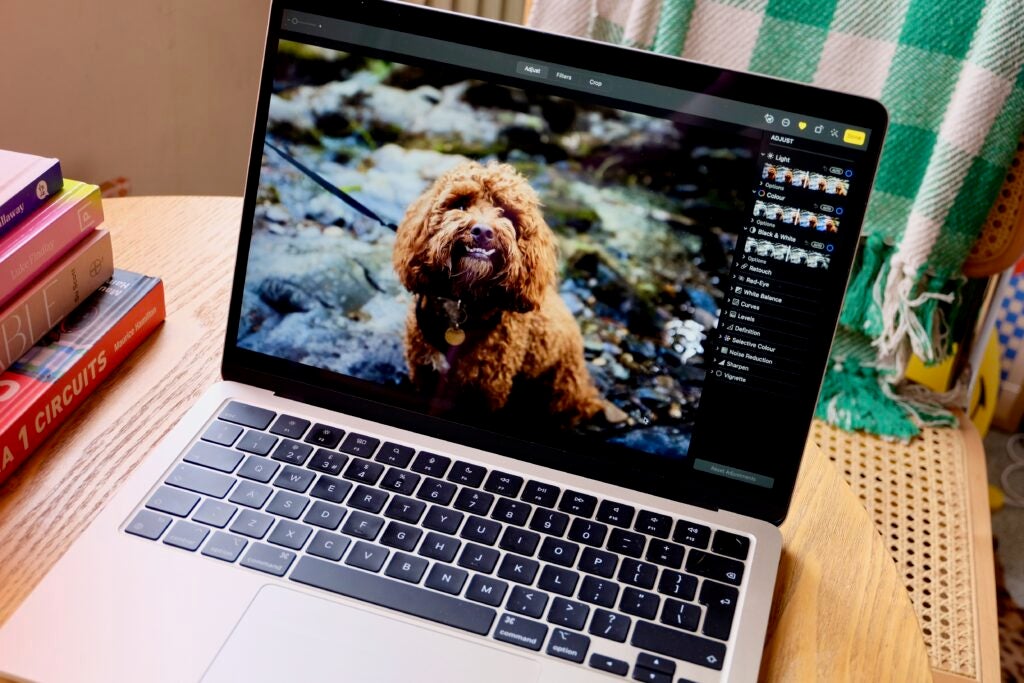
I also miss the SD card and HDMI ports that are now found on the MacBook Pro. I can do without HDMI, but an SD Card reader feels less like a Pro addition and more like a necessity.
I’ll get to the performance of the M3 chip shortly, but it does come with a few other benefits over the M2 and M1 versions of the MacBook Air. You can now output to two monitors (up to 5K/60Hz) rather than one, with the caveat being the MacBook’s lid must be shut. There’s also support for Wi-Fi 6E (up from Wi-Fi 6) and hardware-accelerated ray tracing for more lifelike reflections in graphically intensive games.
The M3 isn’t a huge jump over the already very capable M2. Instead, it offers more of a jump for those who have held onto an Intel Mac or who dived into the Apple Silicon ecosystem early with an M1 machine. The biggest benefits will be to those coming from an Intel machine though, both in terms of raw performance and battery life.
In Geekbench 6, a good benchmarking app that gives a general overview of a machine’s performance, the MacBook Air M3 scored 3128 in the single-core test, and 11854 in the multi-core test. Now, that’s a slight improvement over the 2626 and 10013 the M2 chip scored. However, move to the M1 and the difference is much greater. The M1 MacBook Air scored 2316 in single-core, and 7721 in the multi-core test – this is where you would start noticing that performance increase in everyday use.
Moving over to an Intel MacBook Pro, a 2020 model powered by an Intel i5 chipset, the improvement is vast. I’d say this is really the market where an upgrade to an M3 model would make the most amount of sense. In the same Geekbench 6 test, the 2020 Intel MacBook Pro scored 1188 and 4381 meaning the MacBook Air M3 scored nearly three times the single-core and more than double for multi-core. Impressive stuff, especially in less than four years.
In Cinebench R23, another good test of the machine’s all-round skills, the M3 chip scored 9253 in mult-core tests and 1901 in single-core tests. This is an improvement over a machine running the M1 chip, which scored 1496 and 7619 respectively.
These sorts of results are the same in other benchmarking apps too, and you can see an overview of the scores in the graphs below.
No one should buy a Mac for gaming, but Apple has been slowly improving these machine’s capabilities when playing games in the last few years. In more CPU-intensive games, something like Football Manager 2024 for example, performance is excellent. One of the biggest knocks against Mac gaming is the selection of titles available so as a test, I ran the benchmark inside Rise of the Tomb Raider and it managed a stable 30fps.
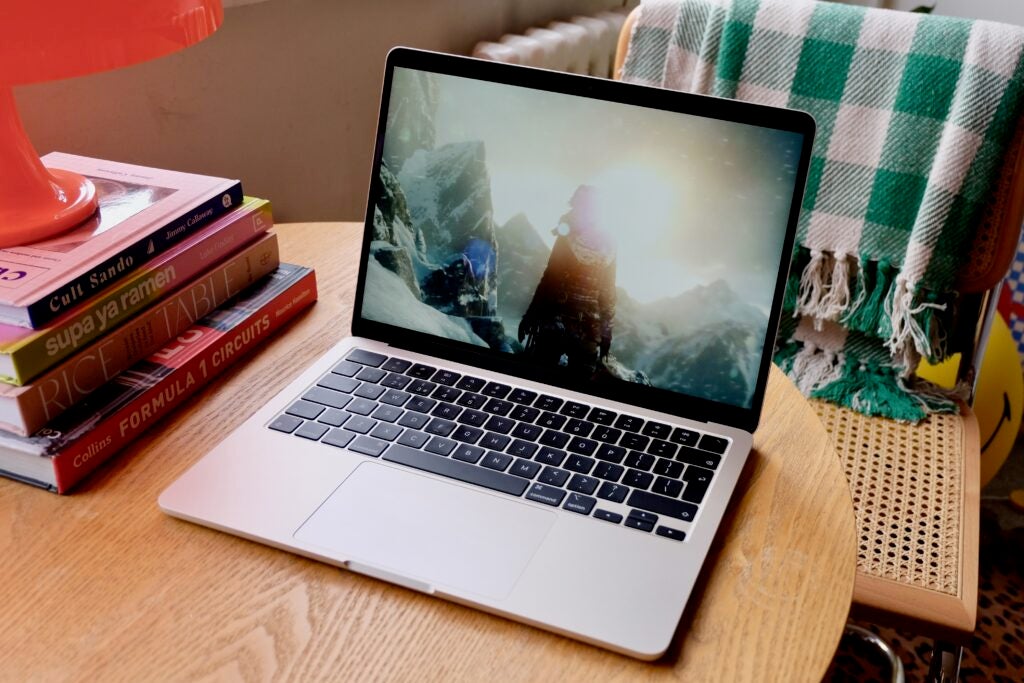
I’ve been using the MacBook Air M3 for an extended period and for everyday use it’s a fabulous machine. The lack of a fan means it’s silent, quite the opposite of an Intel Mac, and it stays cool too. Anyone who has more of a professional workflow, including higher-end video editing or 3D work, should look at the MacBook Pro with either the M3 Max or M3 Pro, but for most people who might partake in photo editing, light video editing and general daily tasks there’s more than enough grunt here.
Battery Life
- Excellent endurance
- MagSafe charger included
Anyone coming from an Intel MacBook will instantly notice the improvements in battery life and even though there’s been no massive jump since the M1’s arrival, these machines are still some of the best when it comes to endurance.
Apple claims both the 13-inch and 15-inch are good for 15 hours of web browsing and 18 hours of video playback. I put these claims to the test, and my results matched up. A looped video, downloaded into the Apple TV app, ran for just shy of 18 hours – that’s up from the same test on the M2 MacBook Air by a couple of hours.
I am not sure how useful these results are, but rest assured in actual tasks and real-life work the battery life is fantastic. In a pretty intensive 9-6 pm workday – full of browsing, word processing, video calls and light photo retouching in Photoshop, the Air lasted with 25% left at the end of the day. On lighter days I was left with upwards of 50% off when I clocked off.
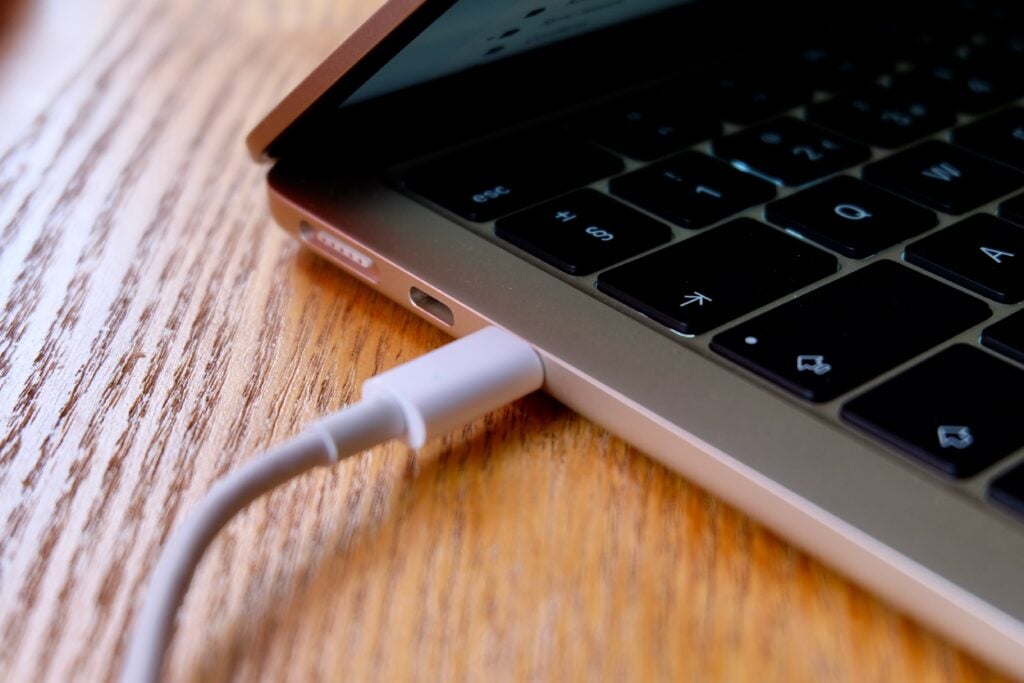
What’s just as important to me is standby times. I used to find that whenever I was working on an Intel MacBook, it would die after a few days of inactivity and drop considerable amounts overnight. That’s not the case here, with barely 2% lost overnight.
All MacBook Air M3 variations come with a MagSafe 3 port for charging and a braided charger that magnetically clips into place. The great benefit of MagSafe is that if you accidentally run your foot through the cable, it’ll detach without bringing the whole laptop with it. You can also charge the machine with either of the USB-C ports, although you’ll need to provide your own charger for this.
The base 13-inch model (the one with the 8-core M3) comes with a 30W USB-C power adapter. Move up to the 512GB SSD model and this changes to a handy 35W plug with two USB-C ports – ideal for charging up both an iPhone and laptop concurrently. You could also buy this separately if you wish. The machine also supports 70W fast charging, but again this plug will need to be purchased separately.
Software
- Good support for Apple Silicon native apps
- Expectation AI skills will come soon
- Yearly major OS
Apple’s latest MacBook Air comes running macOS Sonoma, which was released towards the end of 2023. It looks likely the next yearly version of macOS will be announced at WWDC sometime in June, with a full release coming later in the year after a thorough beta process with both developers and the public.
It looks like AI will be a major theme for the next version of macOS, making use of the neural engine built into the M3 chip.
For now, a lot of the AI skills come from third-party apps, like Adobe’s Creative Cloud suite and Microsoft’s Office platform which encompasses the brand’s Copilot assistant.
For Sonoma, big new additions include a wide variety of gloriously designed moving wallpapers and screen savers, the ability to add widgets to the desktop for glanceable information, improved video conferencing features and a Game Mode that reduces latency for wireless devices and gives priority to the GPU.

When the M1 first arrived, app compatibility was an issue with the accompanying Macs. While Apple’s translation layer ensured many apps designed for Intel ran fine on Apple Silicon, the best experience came from native services designed for M-series. A few years on and I haven’t had issues with apps not functioning as they should. There are also many more native apps built for the chip, including Office, Creative Cloud and more.
Latest deals
Should you buy it?
You should buy if you want a MacBook that gets the job done
Simple: the MacBook Air M3 is a very complete machine that doesn’t have any glaring issues or missing features. It’s fast, with strong battery life and all the benefits of macOS.
You shouldn’t buy if an HDR display is important
If you need a bright HDR display then go for the MacBook Pro with any of the M3 iterations inside. The MacBook Air M3 has a great screen, but it lacks the brightness required for HDR work.
Final Thoughts
For those who don’t have professional workflows, this is the best MacBook you can currently buy and the one I would personally choose. I’d only recommend the MacBook Pro M3 ($1599/£1699) for those who want a fully capable HDR display.
There’s lots of competition on the Windows side, with the £1399.99 Asus Zenbook 14 taking the best laptop crown currently and this does have the OLED display the MacBook Air is missing.
It’s not often said that Apple laptops offer good value, but I think the MacBook Air M3 is just that. With a starting price of £1099/$1099 (down from £1249/$1199 for the M2 13-inch model) rising to a very tempting £1299/$1299 for the 15-inch, this machine is truly hard to beat.
How we test
Every laptop we review goes through a series of uniform checks designed to gauge key things including build quality, performance, screen quality and battery life.
These include formal synthetic benchmarks and scripted tests, plus a series of real-world checks, such as how well it runs popular apps.
We used the device as our main laptop for at least a week.
Tested the performance via both benchmark tests and real-world use.
We tested the battery with a benchmark test and real-world use.
FAQs
If you’re a light user who mostly browses the web, does some word processing, replies to emails and the like you should be fine with 8GB. However, if you have the money for the 16GB upgrade, it’s always best to go for as much memory as you can afford.
There’s a new coating on the darker Midnight colour that does a much better job at reducing the amount of greasy fingerprints that linger. They can still be visible, though.


